WASHINGTON — In the small town of Newport, Rhode Island, a U.S. force lacking in capabilities was about to face off against well-armed and advanced Chinese troops.
It was 2018, and then-Lt. Gen. David Berger was putting four years of simmering thoughts to the test in a wargame at the Naval War College, in hopes of figuring out a better way to employ forces in the Pacific.
His last two assignments had put him at the forefront of the Marine Corps’ shift away from ground wars and back to sea. And he now had a chance to see how all these ideas would play out in a fight against an advanced competitor.
In the wargame, the adversarial force was based on China’s current capabilities plus expected growth in the next couple years. The friendly force was played by the U.S. joint force strictly as it was — no future capabilities, no aspirational readiness levels and not even the F-35 Joint Strike Fighter, as it wasn’t fielded in great numbers at the time.
Though the wargame’s details and results are classified, Berger had clear takeaways for the Marine Corps: Anything heavy was a liability; mobility would be a huge challenge, as would sustaining a force operating so near to China’s shores; and Marines, with the right command-and-control structure, could be a game-changing tool for sea-control and sea-denial missions.
However, Berger told Defense News in a June 8 interview that his primary takeaway from that wargame was the importance of already having forces in the theater before a conflict starts.
“If we didn’t have something forward, then I think [then-Commandant Gen. Robert] Neller is exactly right. He said we should expect to fight to get to the fight — but this fight to get to the fight was getting to be a slaughter [in previous wargames]. So more and more it was clear to not just me, [but to] a bunch of people, the imperative of being forward all the time, persistently,” Berger said.
In the wargame, that pre-positioned force included special operations units and submarines. But Berger wanted Marines already in theater, too, as something of a stand-in force.
“And if they’re going to be in there, then you have to answer the question of: How are they going to survive? How are you going to resupply them? So these became real thinking efforts for a lot of us,” he explained.
Fast forward a few years, and the takeaways from the 2018 wargame directly led to Berger’s Commandant’s Planning Guidance, released the day after he became the Corps’ top officer in July 2019; the Force Design 2030 modernization program, first released in March 2020 and updated annually; the Stand-In Forces concept, released in December 2021 and brought to life by the 3rd Marine Littoral Regiment that was activated in March 2022; and a contested logistics concept released earlier this year, among them.
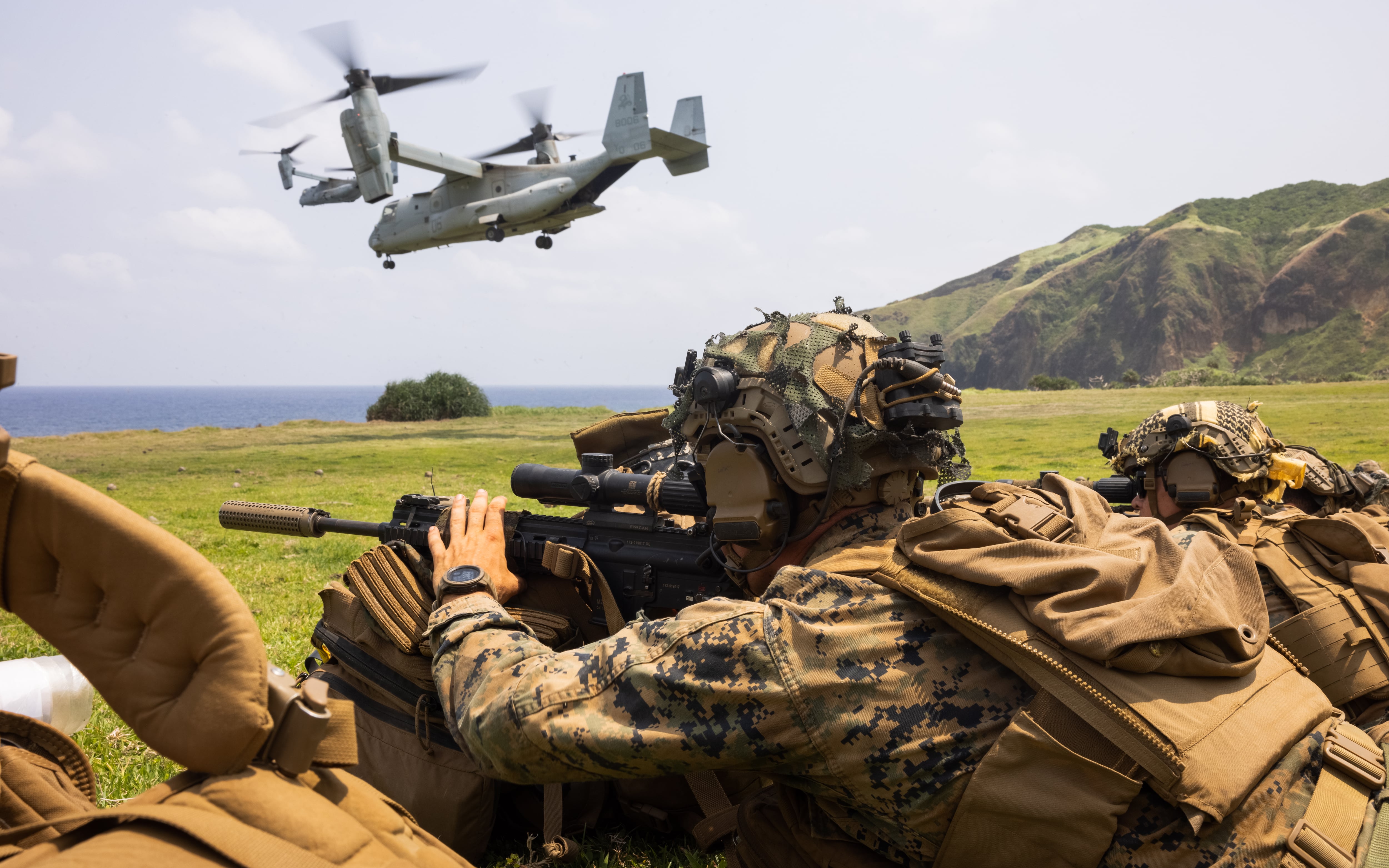
These changes were met with resistance. In fact, Berger faced vocal opposition from the retiree community, unusual for the small service that “was always taught that we did our laundry in private,” said former Navy Secretary and Marine pilot Richard V. Spencer.
Spencer called Berger “the poster child for change, urgency and deliberation,” and said the general fully embodied the phrase “talk softly and carry a big stick.”
“His demeanor is so calm and so collected because it’s based in thought and data,” he told Defense News in a June 21 interview.
A flurry of opinion pieces — some signed, some nameless — began circulating in March 2022, accusing Berger of creating a one-trick pony of sorts, a force optimized for a fight against China but no longer capable of conducting other types of missions around the globe.
“I’m saddened beyond belief knowing that our Marine Corps soon will no longer be the ready combined-arms force that our nation has long depended upon when its interests were threatened,” former Marine Corps combat development head Lt. Gen. Paul Van Riper wrote in Marine Corps Times. “It will be a force shorn of all its tanks and 76% of its cannon artillery, and with 41% fewer Marines in its infantry battalions.”
Despite additional pushback from the likes of former Commandant Gen. James Amos and former Navy Secretary James Webb, Berger has continued undeterred to overhaul his Corps.
Retired Adm. Scott Swift, who commanded U.S. Pacific Fleet when Berger led U.S. Marine Corps Forces Pacific, had observed how the ideas behind Force Design 2030 were validated in the 2018 wargame.
Berger “understood the challenges he was taking on and how he would be criticized, but he had done enough study — this wasn’t just, he showed up as commandant and decided to do this; this came out of his experiences,” Swift said in a June 23 interview.
“He was there when they were using armor and long-range artillery in the Middle East; he saw what the value of it was, but that’s a different warfight” than what the joint force was to prepare for in the Pacific, the admiral said, adding that Berger combined his experiences and a campaign of wargaming to reform the Marine Corps “in a much more consequential way than I think other leaders really had the courage to do.”
Berger took command of the Marine Corps on July 11, 2019. He relinquishes command on July 10, after four years of reforms that will shape the Corps for years to come.
Becoming commandant
The 38th commandant of the Marine Corps almost became a Navy officer.
Ahead of his 1977 graduation from high school in rural Maryland, Berger applied for ROTC scholarships at the advice of his father, who Berger called “the smartest person that I know.” His father had gone to Duke University on an Air Force ROTC scholarship, and Berger ultimately chose to attend Tulane University on a Navy ROTC scholarship due to his interest in the school’s engineering program.
That fall, Berger began school as a naval cadet, but quickly noticed the Marines.
“If you’re a college freshman and don’t know anything about the military, they [Marines] were just a poster. And they not just looked the part — they were clearly different from the Navy instructors, the way they handled themselves, the way they taught their classes, and it was clear that the [cadets in the Marine Corps program] were different, too. So I was drawn to that,” Berger told Defense News in the interview, and he switched to the Marine Corps program as soon as he was assured his scholarship would allow it.
Berger graduated and was commissioned a Marine Corps officer in 1981. He spent his first two tours on the West Coast, with deployments to the Pacific on amphibious ships.
Though separated by geography, he said two formative events happened in October 1983, just two years into his career: Operation Urgent Fury in Grenada, where Marine and joint forces stormed the Caribbean island following a coup, losing 19 American service members but quickly occupying the island; and the bombing of the Marine barracks in Beirut, Lebanon, that killed 241 American service members, including 220 Marines.
“Lieutenants who were in my [The Basic School] class were killed. And I was on the West Coast, and the unit was from the East Coast, but it shocked the whole Marine Corps. And you could understand why, when you lose 240 like that. It’s just not something anyone was expecting. So that definitely shaped things,” he said, looking back at foundational moments in his career.
Berger described the operation in Grenada as a high point for inspiring young Marines, but said the loss in Beirut “made everything real.”
The start of the Gulf War in 1990 and the Sept. 11, 2001, attacks were other “real” moments for him — reminders of the seriousness of his business.
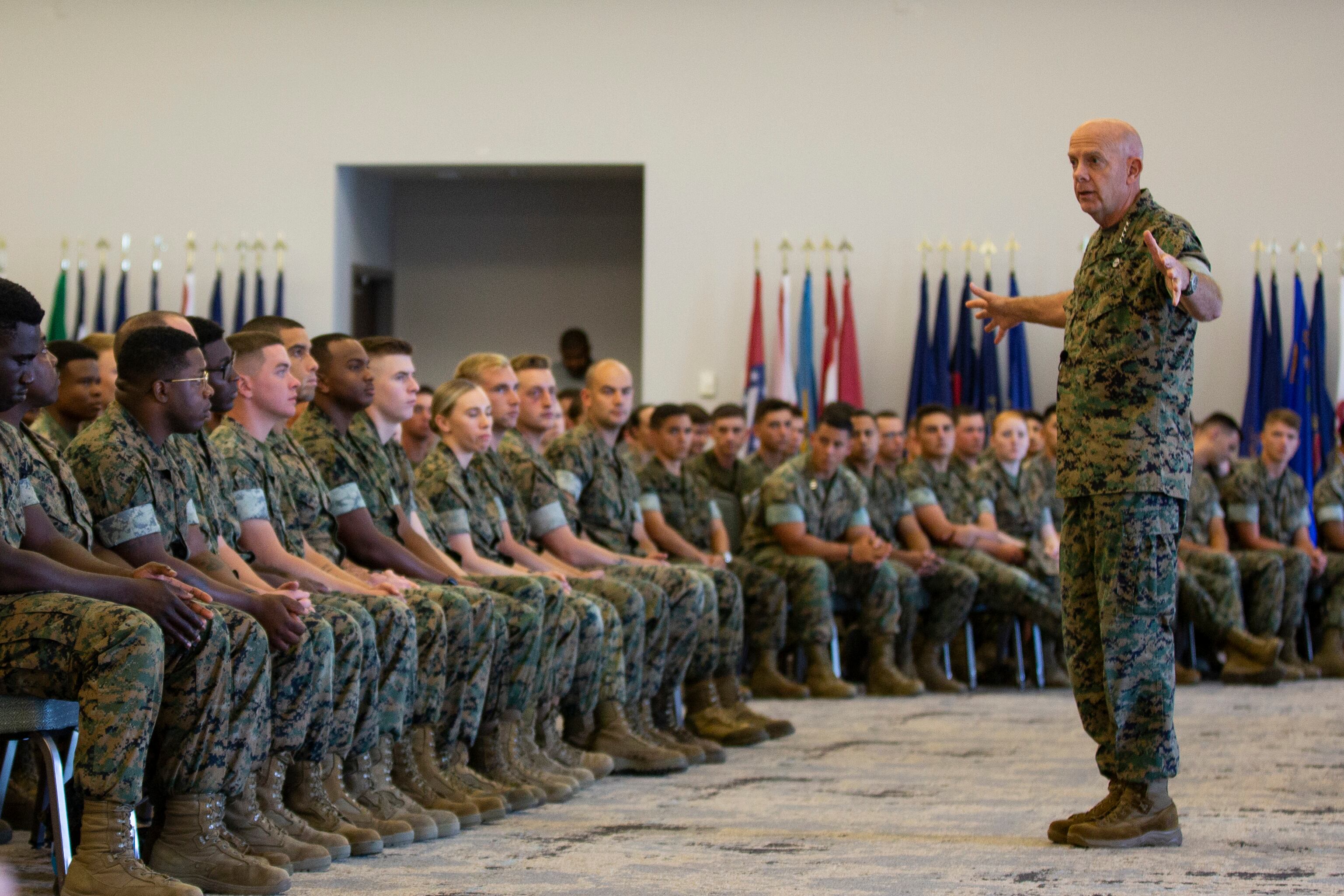
But Berger said the experiences that shaped him as a leader were the losses of Marines directly under his command.
Asked by Defense News what stands out as defining moments in building who he is today, he said, “almost all of them were not necessarily moments, but when you lost Marines, because your immediate thought, most Marine leaders’ immediate thought is, you missed something. You overlooked something. You skipped a step. You immediately take responsibility yourself and go, there’s something we didn’t see. There are a lot of them, a lot of them.”
Berger recounted losing 10 Marines to one improvised explosive device attack in Iraq, and losing a Marine to an accidental grenade explosion inside their own camp in Kuwait. Each time, he said, he scoured Marine Corps procedures for missed or forgotten steps that could have saved lives.
“Those stay with you forever,” Berger said.
A changing Pacific
Berger showed up at Marine Corps Forces Pacific headquarters in Hawaii in 2016, having read about China’s rise and the changing landscape in the region, but with questions about the pace of that change.
Swift and then-U.S. Pacific Command chief Adm. Harry Harris assured him the change was happening faster than most understood, Berger recalled.
Though much of China’s rising military power and its aggressive behavior toward its neighbors was out of his control as the top Marine in the Pacific, Berger could take steps to strengthen relationships with local partners and allies — another theme he brought to Force Design 2030.
“Our relationship at the Marine Corps level with Japan, with Korea, with the Philippines, with Australia, was still strong and growing — and in some cases, growing much faster than I was aware of,” he said.
The ability to entrust allies and partners to share targeting data, protect and resupply small formations of Marines, and otherwise operate intertwined with the Corps and the U.S. joint force is key to Force Design 2030. Berger said he’s seen allies in the Pacific repeatedly prove their trustworthiness throughout his career, and particularly while commanding Marine Corps Forces Pacific.
In 2012, while commanding 1st Marine Division (Forward) in Afghanistan, Berger said one of his reconnaissance teams in northern Helmand province got stuck in their position one night, with bad weather and no American forces nearby to extract them.
An Australian special operations force liaison officer overheard Berger talking to Maj. Gen. Charles Gurganus, the I Marine Expeditionary Force (Forward) commander in Afghanistan.
The Australian Army major chimed in: “ ‘We can do that.’ And, I mean, couldn’t have been 30, 45 minutes later, they take off in MV-22s,” Berger recalled. “I’m sure they had just returned from some other mission and all, but it didn’t matter. He knew the U.S. unit was in a pickle, in a tough spot: ‘We got this. We’ve got aircraft, we’re going.’ No rehearsals, no six hours of prep — just get on the aircraft and go.”
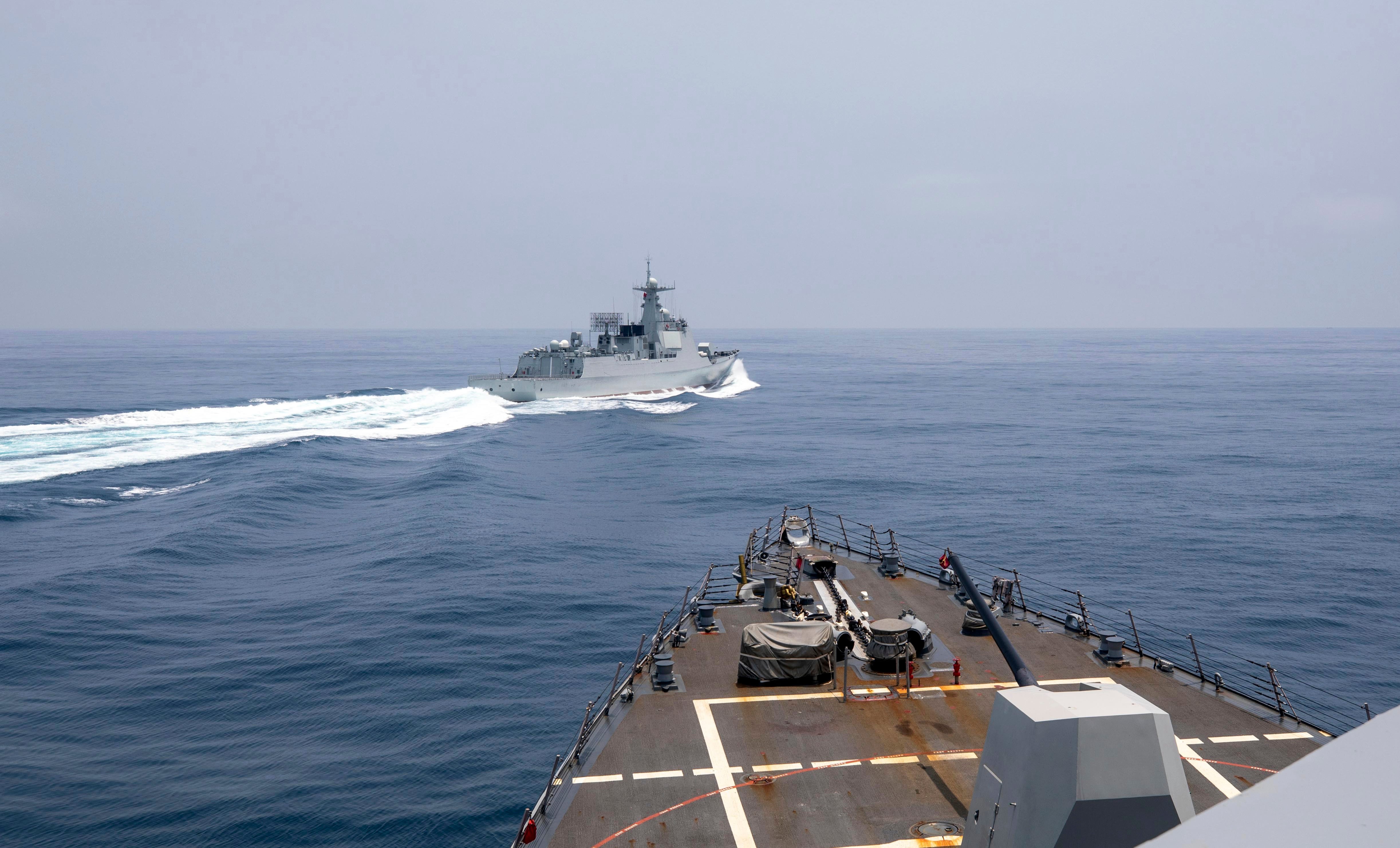
Berger said the power of the “mateship” between the U.S. and Australia was even more evident while he commanded Marine Forces Pacific.
In August 2017, a Marine Corps MV-22 was flying back to the amphibious transport dock Green Bay, which was operating off the coast of Queensland, Australia. As it approached the ship to land, the aircraft suddenly dropped, slammed into the side of the vessel and quickly sank, injuring 23 and killing three.
“I called a couple people in Australia directly, immediately,” Berger said, as the U.S. did not have the right divers on hand to recover the wreckage and the bodies of the missing Marines.
His Australian contacts made a few calls, and then called back Berger to promise a ship with deep-sea divers within 12 hours.
“No paperwork, no messages, no money, no anything — on a phone call,” Berger said.
Though the three Marines who went down with the aircraft could not be rescued, Berger said the Australian divers spent at least three days in the water, exceeding the time limits for how long they should be underwater at those depths, all to assure they recovered the fallen Marines’ bodies.
Berger and his team flew to Australia in January 2018 to award the divers and other supporting units with a Meritorious Unit Commendation.
Berger has experienced opposition to the reliance on allies and partners in the Force Design 2030 and Stand-In Forces strategies. The two main criticisms are that partner forces aren’t skilled enough, and that the U.S. couldn’t rely on them to show up in the event of a conflict.
“They’re just excuses,” he said, referring to the criticism and noting that he “absolutely” believes allies will be there for the Marine Corps and the rest of the U.S. military if called upon for a fight.
Swift said people often talk about a Chinese invasion of Taiwan by 2027 as a fait accompli, a given.
“That doesn’t have to be the case if they do more thoughtful things like Gen. Berger’s doing — the biggest thing that he’s doing is deterrence,” Swift said, highlighting Berger’s work to deepen Marines’ ties to allies and partners in the Pacific.
Creating a lasting change
In 2018, Neller — the commandant at the time — tapped Berger to come to Washington to serve as the deputy commandant for combat development and integration. In this position, Berger would take his knowledge of the Pacific and his four years of reforming regional Marine forces, and apply it to the entire Corps.
“It was very clear to everyone the rising prominence of China in terms of the National Defense Strategy, so I think he brought me to CD&I because that’s where combat development happens. And if China is central to our security, then you need to understand the Pacific,” Berger said.
Berger said he didn’t have a force-wide reform plan going into the job, but it “gave me time to observe, to think of, if we needed to accelerate [the reforms Neller was starting], what would that take? What kind of hard decisions would we have to make?”
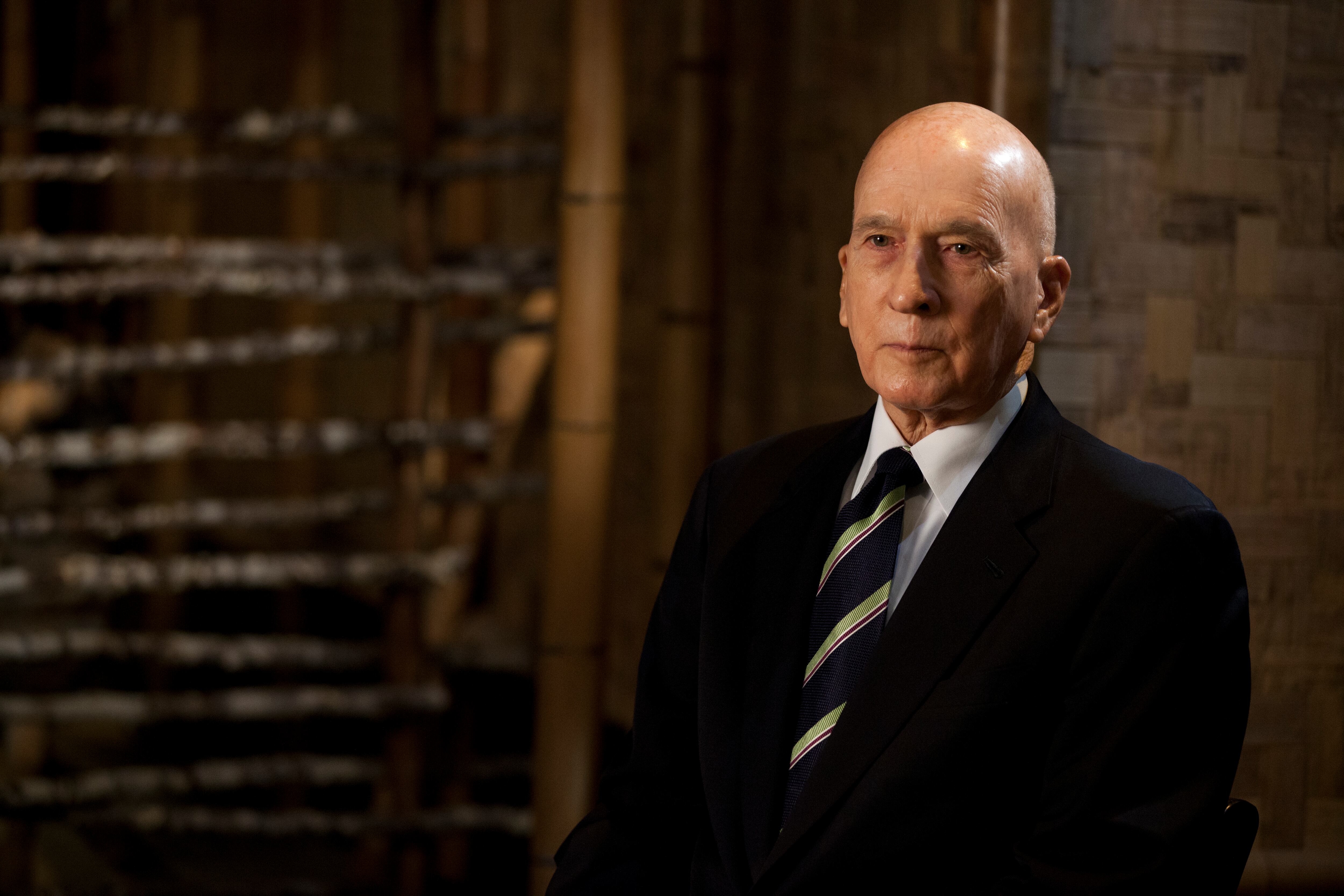
That forethought caught the eye of Spencer, who served as secretary of the Navy from August 2017 to November 2019. Spencer interviewed several candidates during the search for the 38th commandant, and he said his initial conversation with Berger started slowly.
“It just progressed so comfortably and so logically, and so data-informed. I remember the data-informed nature,” he said, noting that Berger didn’t just answer Spencer’s questions but rather explained how analysis informed an answer.
Spencer said he went into the interview process without a front-runner in mind but was drawn to Berger, knowing that the Marine Corps would need a major overhaul in the coming years.
“You can get change agents — and some are very successful — that just come in and put a 12-volt battery, boom, charge right to the heart, and go” ‘We’re changing. Those of you who can’t take it, you can take a left; we’re all going right,’ ” Spencer said.
Berger, on the other hand, wanted everyone to come along with his reforms and get as much change implemented as possible.
“You could see it in his demeaner and the way he led, that a steady hand at the tiller doing something this dramatic was exactly what we needed,” Spencer said.
Those dramatic changes were revealed July 12, 2019 — one day after Berger was sworn in as commandant. He released a Commandant’s Planning Guidance that portended a fundamental overhaul.
“Visions of a massed naval armada nine nautical miles off-shore in the South China Sea preparing to launch the landing force in swarms of [surface connectors] are impractical and unreasonable,” he wrote. Instead, Marines would rethink their strategy in light of growing anti-access/area-denial threats, and would collaborate with the Navy to become a sea-control and sea-denial fleet.
Within 24 hours he released his first thoughts, and within eight months Force Design 2030 was released, kicking off a generational change for the Corps.
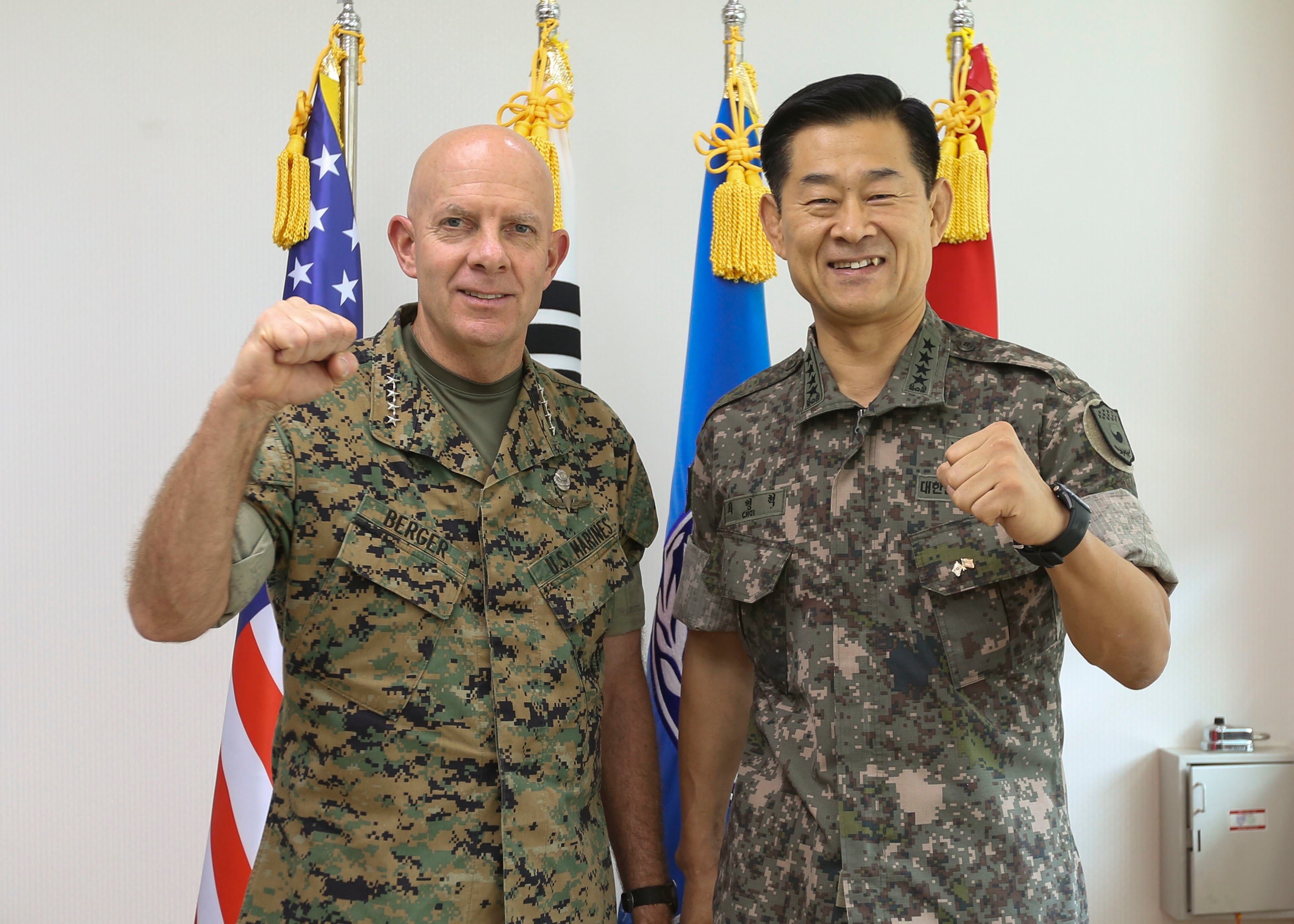
Berger said he didn’t mind the wave of criticism from retired Marine Corps leaders, as debate can be healthy.
But he said red lines have been crossed since last year.
A Wall Street Journal op-ed, written by former Navy Secretary Webb, alleged that 22 retired four-star generals signed a private letter to Berger, and that “above 90 percent” of retired general officers were concerned about Force Design 2030.
“Everybody speaks for themselves; you don’t speak for others,” Berger said. “So when you say all or most or three dozen, or whatever, you better have their concurrence.”
Berger said another line was crossed when an opposition group hired lobbyists to make their case on Capitol Hill.
“Congress is the operating area for the sitting commandant, and you don’t wade into there, you don’t try to resist or fight there, you don’t have an active insurgency there. That’s where the commandant operates on behalf of the Marine Corps,” Berger said.
“The debate is healthy, but once you’ve had the debate and it’s very clear that the organization is headed in a certain direction and is supported by the civilian leadership and is supported by Congress, OK, then you’re done. Then just being loud over and over and over again — unless there’s some new information,” Berger added. “I’m not sure what is the benefit of that.”
Former combat development head Van Riper, who has led opposition, told Defense News the strong pushback from the retired community had nothing to do with Berger as a person but was the result of “the drastic changes and the nontraditional way in which those changes were handled and executed.”
“Our Corps made its reputation because of its willingness to close with and destroy the nation’s enemies, and it did this with an infantry-heavy force supported by tanks, cannon artillery, engineers, close air support and dedicated logistics efforts,” he said.
Changes over time, he added, were “the product of a highly regarded combat development process, which thoroughly vetted new operational methods before implementation.”
“Force Design 2030 has severely crippled Marine Corps capabilities to respond quickly and effectively to global crises and contingencies across the spectrum of conflict,” he said, noting that Berger may not want the Corps to be a second ground force but that sometimes that’s what the nation demands.
Dakota Wood, a senior research fellow for defense programs at the Heritage Foundation think tank, said that while Force Design 2030 is sound, the sales pitch could have gone better.
Wood noted the Marine Corps began to worry in the 1990s about long-range anti-ship cruise missiles and how they would affect amphibious operations, leading to early acquisition wins like the MV-22 Osprey program and failures like the Expeditionary Fighting Vehicle, both of which were meant to help Marines get from the ship to shore across greater distances and at higher speeds.
“What’s interesting about Gen. Berger’s commandancy is he grew up in that whole debate that took place in the pages of the Marine Corps Gazette and in intellectual forums” regarding growing threats to amphibious operations, Wood said. But after 9/11, the Marine Corps was committed to land wars and “lost touch with the sea” in many ways.
“What Gen. Berger really brought with him into the commandancy is saying: ‘The world has not gotten easier; it’s gotten harder. We are a naval power projection force, not a second army,’ ” Wood added. “I find it stunning that this guy comes into the office and he implements things that the Marine Corps has talked about for 30 years. But change is scary, and it was in the implementation that generated all this criticism.”
Wood said Berger talked a lot in 2020 about what would change, what the Corps would divest to free up funds for new investments, and what new gear and concepts the service would come to rely on.
For his part, Berger has acknowledged he should have spent more time talking about the fundamentals of the Marine Corps that would not change.
However, Wood noted that the divest-to-invest approach, while unpopular, was necessary to make significant change during tight fiscal times.
“You can either stay with the old Marine Corps and proven, known sorts of things, and actually be irrelevant in your primary mission area, which is naval power projection; or you can adopt these new things, which are really, really good and have been [proved] in the various testing and training and force-on-force exercises, but that means you’re going to have to leave something behind,” Wood said.
Despite the initial messaging, the analyst said he believes Force Design 2030 was the right change, and Berger was the right man to lead it.
“His legacy — it’s so premature to be talking about that — [is] that he will be seen as one of these pivotal commandants, just like when we shifted from small wars to large-scale amphibious operations going into World War II, and then innovation in the use of helicopters and all the other things — deployed MEUs that were all over the world doing crisis response and all that. So this is a big change for the Corps that enables it to keep pace with changing times.”
Megan Eckstein is the naval warfare reporter at Defense News. She has covered military news since 2009, with a focus on U.S. Navy and Marine Corps operations, acquisition programs and budgets. She has reported from four geographic fleets and is happiest when she’s filing stories from a ship. Megan is a University of Maryland alumna.





